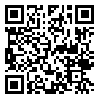Sat, Dec 13, 2025
[Archive]
Volume 37, Issue 1 (2-2023)
Med J Islam Repub Iran 2023 |
Back to browse issues page
Download citation:
BibTeX | RIS | EndNote | Medlars | ProCite | Reference Manager | RefWorks
Send citation to:



BibTeX | RIS | EndNote | Medlars | ProCite | Reference Manager | RefWorks
Send citation to:
Jamshidi K, Bagherifard A, Zendehdel K, Sharifi Kia A, Sheikhtaheri A, Hashemi N, et al . Establishment of Iran Musculoskeletal Tumor Registry: A Study Protocol and Lessons Learned from Implementation and the Pilot Phase. Med J Islam Repub Iran 2023; 37 (1) :294-301
URL: http://mjiri.iums.ac.ir/article-1-8542-en.html
URL: http://mjiri.iums.ac.ir/article-1-8542-en.html
Khodamorad Jamshidi 

 , Abolfazl Bagherifard
, Abolfazl Bagherifard 

 , Kazem Zendehdel
, Kazem Zendehdel 

 , Ali Sharifi Kia
, Ali Sharifi Kia 

 , Abbas Sheikhtaheri
, Abbas Sheikhtaheri 

 , Nasim Hashemi
, Nasim Hashemi 

 , Shimasadat Nahvizadeh
, Shimasadat Nahvizadeh 

 , Alireza Mirzaei
, Alireza Mirzaei 




 , Abolfazl Bagherifard
, Abolfazl Bagherifard 

 , Kazem Zendehdel
, Kazem Zendehdel 

 , Ali Sharifi Kia
, Ali Sharifi Kia 

 , Abbas Sheikhtaheri
, Abbas Sheikhtaheri 

 , Nasim Hashemi
, Nasim Hashemi 

 , Shimasadat Nahvizadeh
, Shimasadat Nahvizadeh 

 , Alireza Mirzaei
, Alireza Mirzaei 


Bone and Joint Reconstruction Research Center, Department of Orthopedics, School of Medicine, Iran University of Medical Sciences, Tehran, Iran , jamshidi_K@yahoo.com
Abstract: (1492 Views)
Background: The number of available musculoskeletal tumor registries is relatively small. We developed a registry system focused on the clinical aspects of musculoskeletal tumors to improve quality of care indexes through the development of updated national protocols. In this study, we describe our protocol, challenges, and the data collected during the implementation of the registry system in a single-specialty orthopedic center in Iran.
Methods: Three main malignant bone tumors, including osteosarcoma, Ewing sarcoma, and chondrosarcoma, were included in the registry. After establishing a steering committee, we defined the minimum data set based on a literature review and suggestions from an expert panel. Accordingly, the data collection forms and the web-based software were developed. The collected information was categorized into 9 classes, including demographics, socioeconomic data, signs and symptoms, past medical history, family history, laboratory tests, tumor characteristics, primary treatment, and follow-up. Data collection was performed both retrospectively and prospectively.
Results: Until September 21, 2022, a total of 71 patients were registered (21 patients prospectively and 50 patients retrospectively) and consisted of 36 (50.7%) cases of osteosarcoma, 13 (18.3%) cases of Ewing sarcoma, and 22 (31%) cases of chondrosarcoma. The implementation of the registry demonstrated promising data regarding the tumor characteristics, delay patterns, and socioeconomic status of the patients.
Conclusion: The main lessons learned were to develop a monitoring system to make sure that the new staff is adequately trained for the registration process as well as avoid the inclusion of time-consuming useless data in the minimum data set.
Methods: Three main malignant bone tumors, including osteosarcoma, Ewing sarcoma, and chondrosarcoma, were included in the registry. After establishing a steering committee, we defined the minimum data set based on a literature review and suggestions from an expert panel. Accordingly, the data collection forms and the web-based software were developed. The collected information was categorized into 9 classes, including demographics, socioeconomic data, signs and symptoms, past medical history, family history, laboratory tests, tumor characteristics, primary treatment, and follow-up. Data collection was performed both retrospectively and prospectively.
Results: Until September 21, 2022, a total of 71 patients were registered (21 patients prospectively and 50 patients retrospectively) and consisted of 36 (50.7%) cases of osteosarcoma, 13 (18.3%) cases of Ewing sarcoma, and 22 (31%) cases of chondrosarcoma. The implementation of the registry demonstrated promising data regarding the tumor characteristics, delay patterns, and socioeconomic status of the patients.
Conclusion: The main lessons learned were to develop a monitoring system to make sure that the new staff is adequately trained for the registration process as well as avoid the inclusion of time-consuming useless data in the minimum data set.
Type of Study: Study Protocol |
Subject:
Orthopedic
Send email to the article author
| Rights and permissions | |
 |
This work is licensed under a Creative Commons Attribution-NonCommercial 4.0 International License. |





